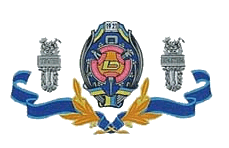 |
Abstract
Grinding of metals is a complex material removal operation involving cutting, ploughing, and rubbing depending on the extent
of interaction between the abrasive grains and the workmaterial under the conditions of grinding. It is also a stochastic process in
that a large number of abrasive grains of unknown geometry, whose geometry varies with time, participate in the process and
remove material from the workpiece. Also, the number of grains passing through the grinding zone per unit time is extremely large.
To address such a complex problem, it is necessary to analyze the mechanics of the grinding process using probability statistics,
which is the subject of this investigation. Such an analysis is applicable to both form and finish grinding (FFG), such as surface
grinding and stock removal grinding (SRG), such as cut-off operation. In this investigation, various parameters of the process
including the number of abrasive grains in actual contact, the number of actual cutting grains per unit area for a given depth of
wheel indentation, the minimum diameter of the contacting and cutting grains, and the volume of the chip removed per unit time
were determined analytically and compared with the experimental results reported in the literature. Such an analysis enables the
use of actual number of contacting and cutting grains in the grinding wheel for thermal and wheel wear analyses. It can also enable
comparison of analytical work with the experimental results and contribute towards a better understanding of the grinding process.
The analysis is applied to some typical cases of fine grinding and cut-off operations reported in the literature. It is found that out
of a large number of grains on the surface of the wheel passing over the workpiece per second (~million or more per second),
only a very small fraction of the grains merely rub or plough into the workmaterial (3.8% for FFG and 18% for SRG) and even
a smaller fraction (0.14% for FFG and 1.8% for SRG) of that participate in actual cutting, thus validating Hahn’s rubbing
grain hypothesis.
© 2003 Elsevier Ltd. All rights reserved.
complete version - On the mechanics of the grinding process.pdf (230k)
|
 |


